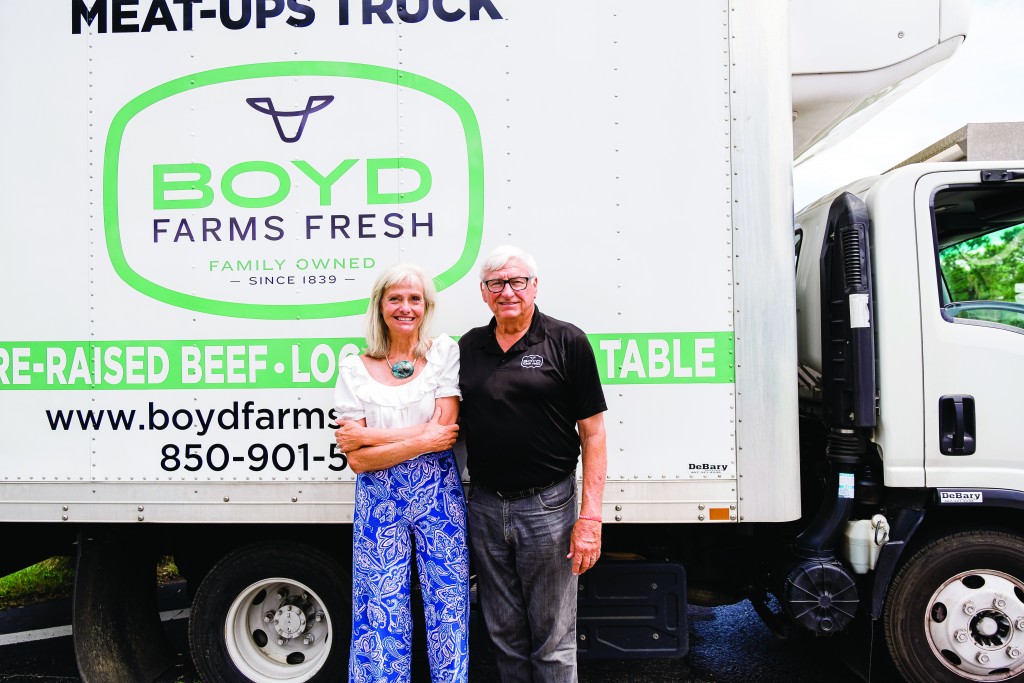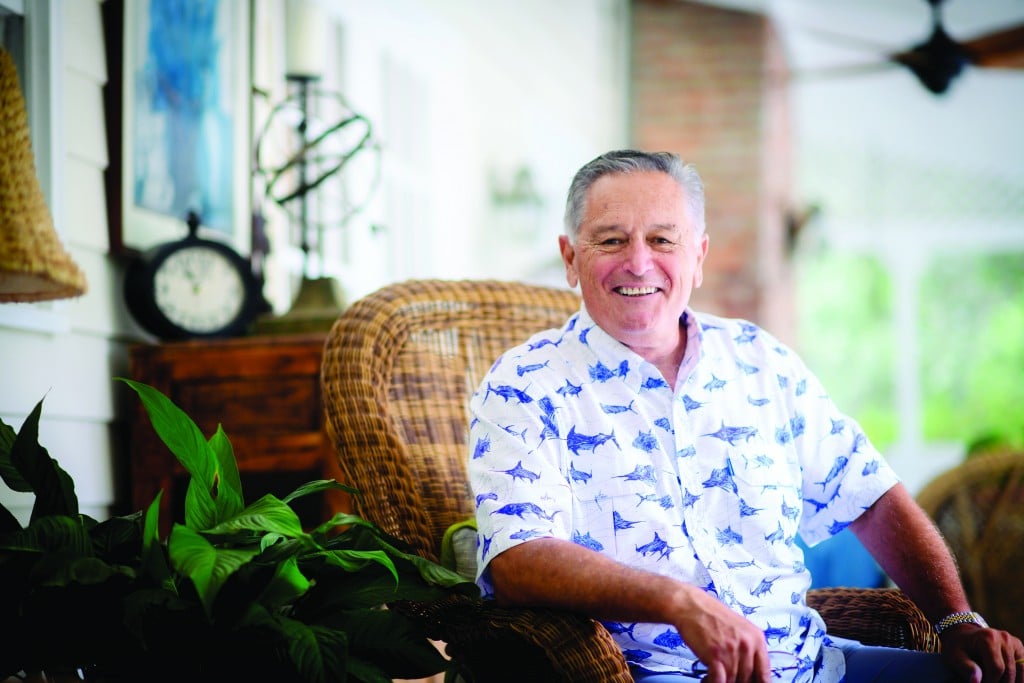Missing Reefs
FSU study gets to the bottom of oyster collapse

In undertaking a $9.5 million research project, it’s essential that participants in the study first understand its intent, goals, scope and purpose.
Dr. Sandra Brooke is the principal investigator for the Florida State University Coastal & Marine Lab’s Apalachicola Bay System Initiative (ABSI), which seeks, per its mission statement, to understand the causes of the decline of the bay’s ecosystem and the deterioration of oyster reefs. Its work product, ultimately, will be a management and restoration plan for the oyster reefs and the health of the bay.
Many surely hope that the project will lead to the commercial revitalization of a fishery that once accounted for 90% of the oysters harvested in Florida and 10% of the nationwide total. The activity provided livelihoods for hundreds of oyster catchers and seafood house workers.
Brooke frames things differently.
“We need to focus on bringing back the ecosystem and stop thinking about oysters in terms of harvest,” she said. “We need to think of oysters as ecosystem engineers and a keystone species. They are a critical part of a healthy estuarine ecosystem.”
Brooke grew up southwest of London, England, and holds a doctorate earned at the University of Southampton’s National Oceanography Centre. For some 20 years, she studied deepwater benthic animals especially corals. Oysters dragged her out of the depths and into the shallows.
The bulk of the funding for ABSI — $7,998,678 — is being provided by Triumph Gulf Coast, the statutorily created organization responsible for disbursing damages paid by BP to the state owing to the Deepwater Horizon oil spill. FSU is providing matching funds that make up the remainder.
FSU’s agreement with Triumph Gulf Coast required that it make “substantial progress toward an ABSI management and restoration plan within 48 months of initial funding.” The agreement was executed on March 15, 2019.
Apalachicola Bay’s oyster fishery is said to have collapsed in 2012. Its precipitous decline, Brooke said, had started five years earlier and resulted from a combination of causes that added up to a “perfect storm.”
“It’s difficult to hindcast, to look back in time, but people have tried to do that and have come to the conclusion that there is no single thing that caused this problem, which is usually the case in biological systems,” Brooke said. “They don’t usually collapse for one reason.”

Salinity levels are a key factor in the lives of oysters, notes Dr. Sandra Brooke of the FSU Marine Lab in St. Teresa. “At higher salinities, things go differently in the system,” she said. “The oysters get physiologically stressed, and marine predators move in … . Disease stress goes up and things are generally worse for oysters and other animals.” Photo by Dave Barfield
Droughts contributed to the decline. So did upstream demands for freshwater withdrawn from the Flint, Chattahoochee, Apalachicola river system. Overfishing took a toll, and so did poor resource management decisions and habitat loss.
The combined effects of droughts and withdrawals resulted in increased salinity in the bay.
“Oysters are estuarine animals that do best in a sort of sweet spot in salinity levels,” Brooke said.
Salinity levels are expressed as the weight of dissolved salts (in grams) in a kilogram of water. Oysters do best when salinity ranges between 15 and 25 g/kg. Brackish water has a salinity of 1 to 2 g/kg. In seawater, the salinity level exceeds 35 g/kg.
“At higher salinities, things go differently in the system,” Brooke explained. “The oysters get physiologically stressed, and marine predators move in, especially the gastropod snails like oyster drills. So, we get high predation, stress-induced mortality, disease stress goes up and things are generally worse for oysters and other animals.”
Early in its work, the ABSI team conducted surveys to determine the extent of any oyster reefs remaining in the bay. Their finding: There are pretty much no reefs left.
“There used to be hundreds of acres of oyster reefs, but now those complex reef structures have gone away due to harvesting, bioerosion and other causes,” Brooke said. “What we have left is shell hash, but it’s not terribly stable.”
That is, bay currents move the material around. And, its nature is such that it doesn’t provide oysters with hiding places within which they can grow and escape predation.
“Oysters are funny little creatures in that they make their own habitat,” Brooke said. “They are unlike other fisheries species where if you deplete the stock, you can take away the source of the stress — usually fishing — and if it hasn’t been damaged beyond repair, it will rebound because you haven’t taken away its habitat. That’s not the case with oysters.”
Left alone and given suitable salinity levels, oysters might over time begin to regenerate reefs.
Maybe.
But, right now, there are too few adult oysters in the bay to bring the system back again.
ABSI is here to help. It is unable to exact influence on droughts or influence Atlanta’s demand for water, but it can make up for lost habitat.
Working with various types and amounts of substrate or cultch — hard material to which free-swimming oyster spat can attach and mature — ABSI is making discoveries likely to influence future restoration efforts.
“We are trying alternatives on a small scale and seeing what works,” Brooke said. “That can inform a larger effort. First, we tested oyster shells, which everybody likes. It’s the gold standard where spat recruitment is concerned, but it’s not readily available. And, if you put shell on a bed of hard-pack substrate, it gets blown out.”
ABSI tried limerock of a diameter used in road building. It provided stability, but not enough hidey-holes.
ABSI has moved on to experiment with larger chunks of limerock and concrete. In May, it built 16 sites measuring 50-by-26 feet in the Cat Point area of the bay by deploying, with the help of 20 oystermen and women, 416 cubic yards of limerock, 416 cubic yards of concrete and 96 cubic yards of shell.
Four sites of each of four types were constructed:
■ 2-inch to 6-inch limerock deployed to a height of 15 inches.
■ 2-inch to 6-inch limerock deployed 12 inches high with three inches of shell on top.
■ 4-inch to 6-inch limerock deployed to a height of 15 inches.
■ 4-inch to 6-inch limerock deployed 12 inches high with three inches of shell on top.
The jury is out. The sites will need to soak for months before ABSI can determine which are the most effective.
“We know that there are a lot of different animals that live in oyster bars, but we don’t know what the role of each of them is in the functioning of a healthy reef,” Brooke said. “The best we can do, I think, is to recreate what Mother Nature did and make things with lots of holes that creatures can live in. We don’t have to understand precisely what each animal does; we just need to provide homes for them to move into.”
In response to the oyster fishery’s collapse, the State of Florida imposed a five-year moratorium, effective Jan. 1, 2021, on the harvesting of wild oysters in Apalachicola Bay.
Are oyster populations responding? “Absolutely,” Brooke said.
She explained that reefs that are home to 400 pounds of market-size oysters per acre are deemed capable of supporting a sustainable fishery. Prior to the closure, none of the 10 limerock sites scattered across the bay had reached that level. Two years after the moratorium was put in place, four sites had.
The four sites, however, total just 56 acres.

Doctoral candidate Adam Alfasso retrieves hatchery oysters for use in reef restoration work in Apalachicola Bay. Photo by Dave Barfield
“When you think of that in the context of the hundreds of acres that we used to have, you could fish those out pretty quickly,” Brooke said.
ABSI carries out its work in close coordination with a community advisory board whose members include elected officials, seafood workers, representatives of trade associations and nongovernment organizations and members of the scientific community.
“They are working with us to come up with a management/restoration plan that has stakeholder buy-in,” Brooke said. “If your plan doesn’t have some level of consensus, there aren’t enough cops out there to enforce unpopular regulations. We want to come up with a number of options for the state Fish and Wildlife Conservation Commission to consider. We are not going to get everyone to agree on anything including the time of day, but there are things that we think can work and that the community can live with.”
Oyster aquaculture, Brooke said, helps meet consumer demand for the homely bivalves — Brooke suggested that rallying support for oysters would be easier if they looked more like pandas — “but it’s unfortunate that we need it. Anytime you resort to farming, it’s an indication that wild harvest is in trouble.”
Farmed oysters filter water just like wild ones do, but “aquaculture is not a replacement for the wild harvest,” Brooke said. “It doesn’t create habitat for other animals. It doesn’t result in shoreline erosion protection. My fear is that if there are enough farmed oysters to meet market demands, we will forget about bothering about the wild stocks. That would be a shame.”
Oyster aquaculture is not a panacea. Nor a Panacea.

